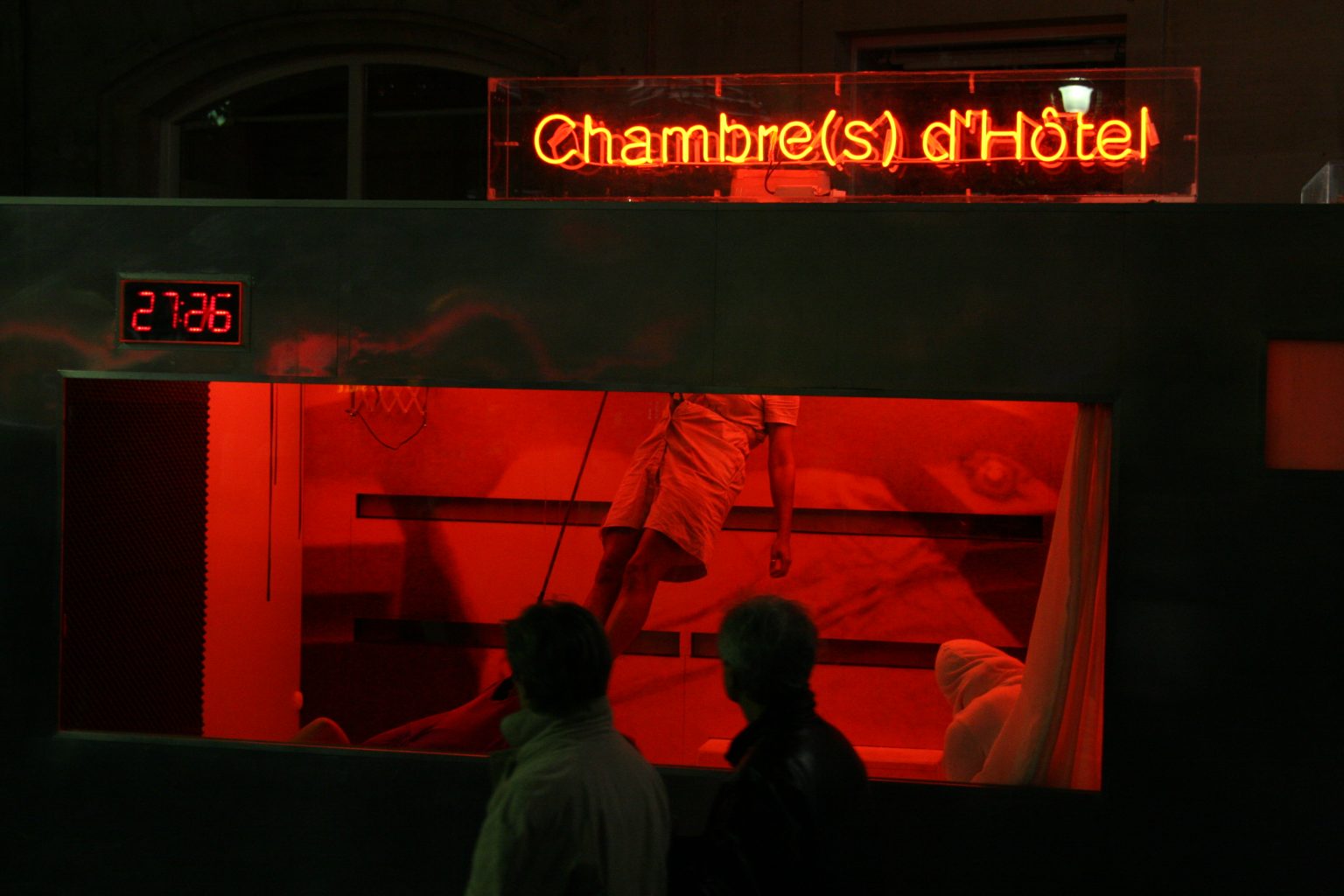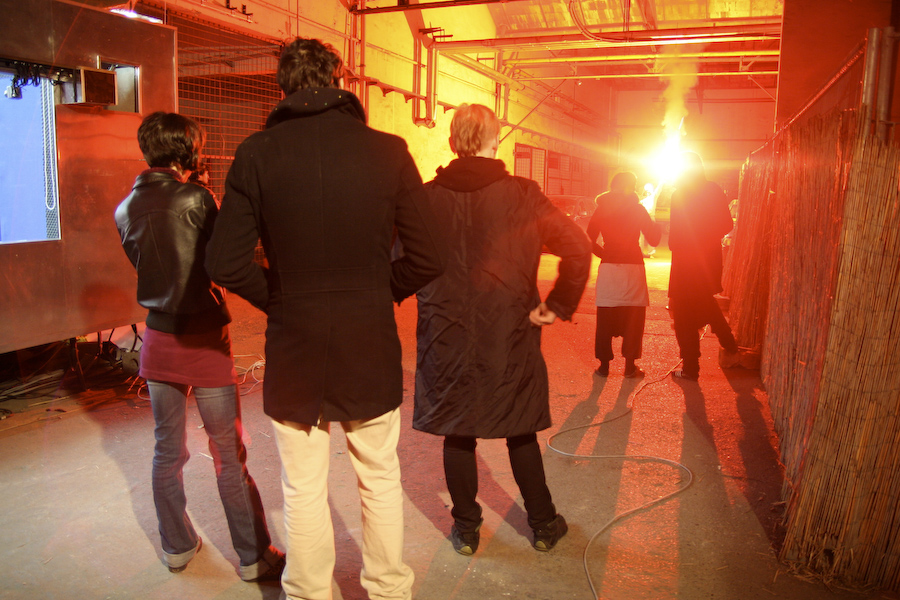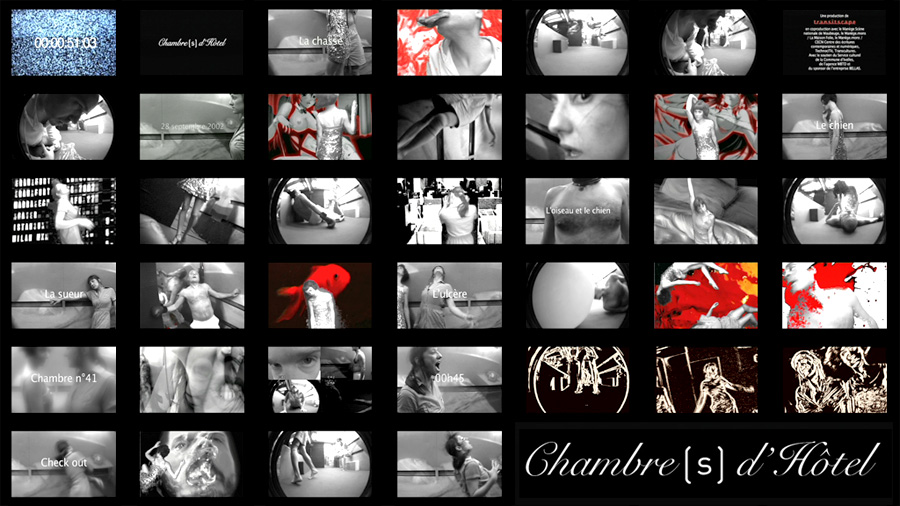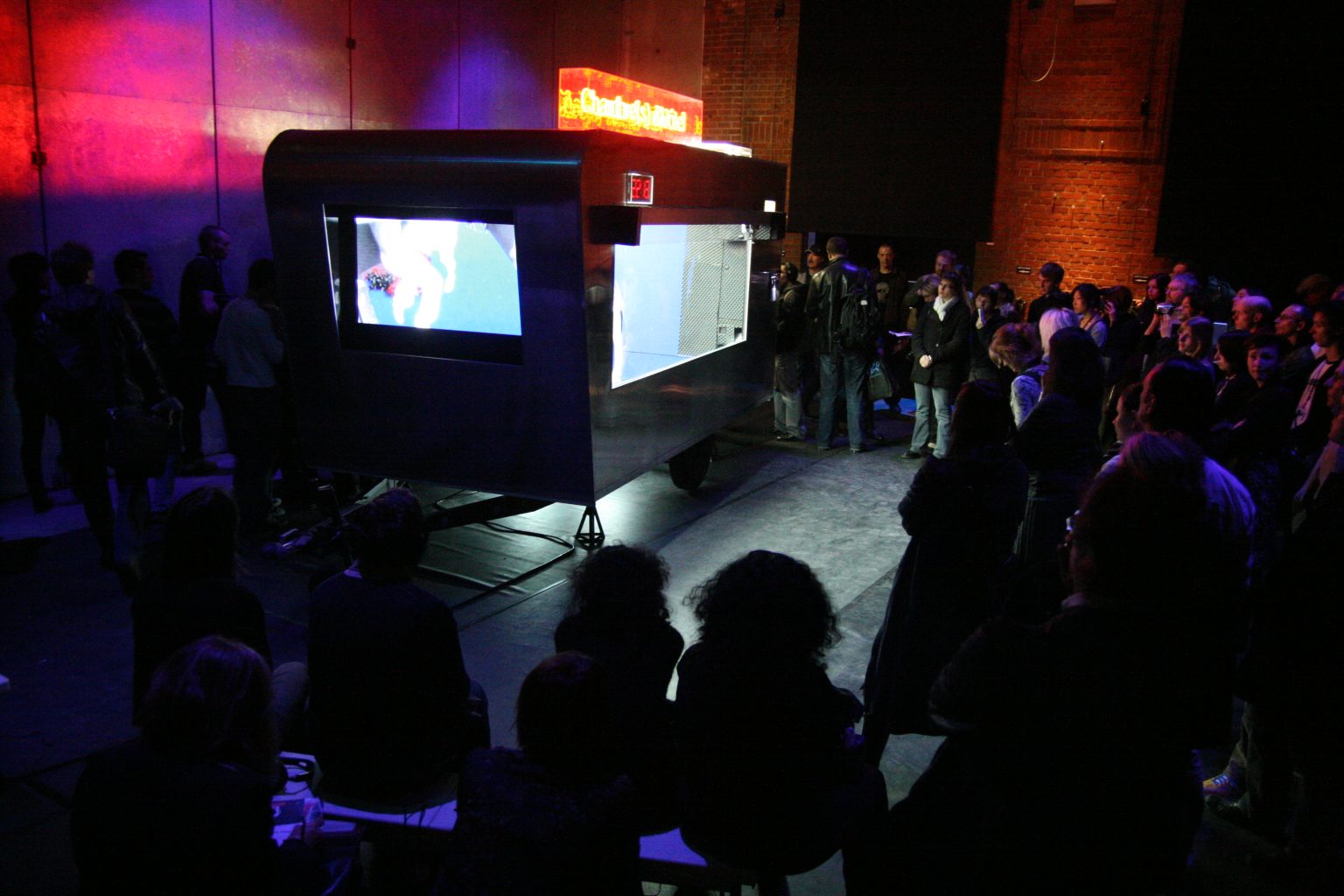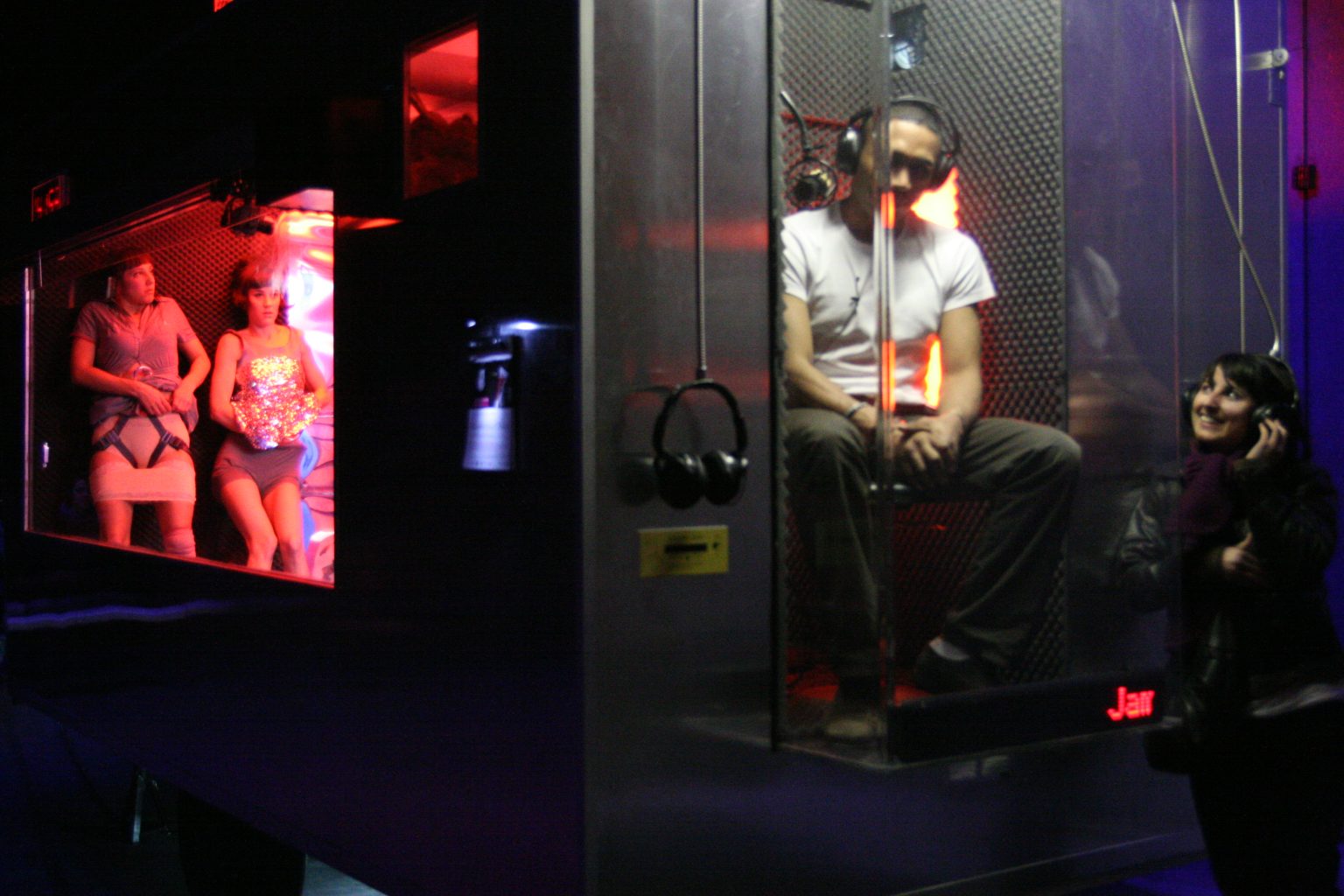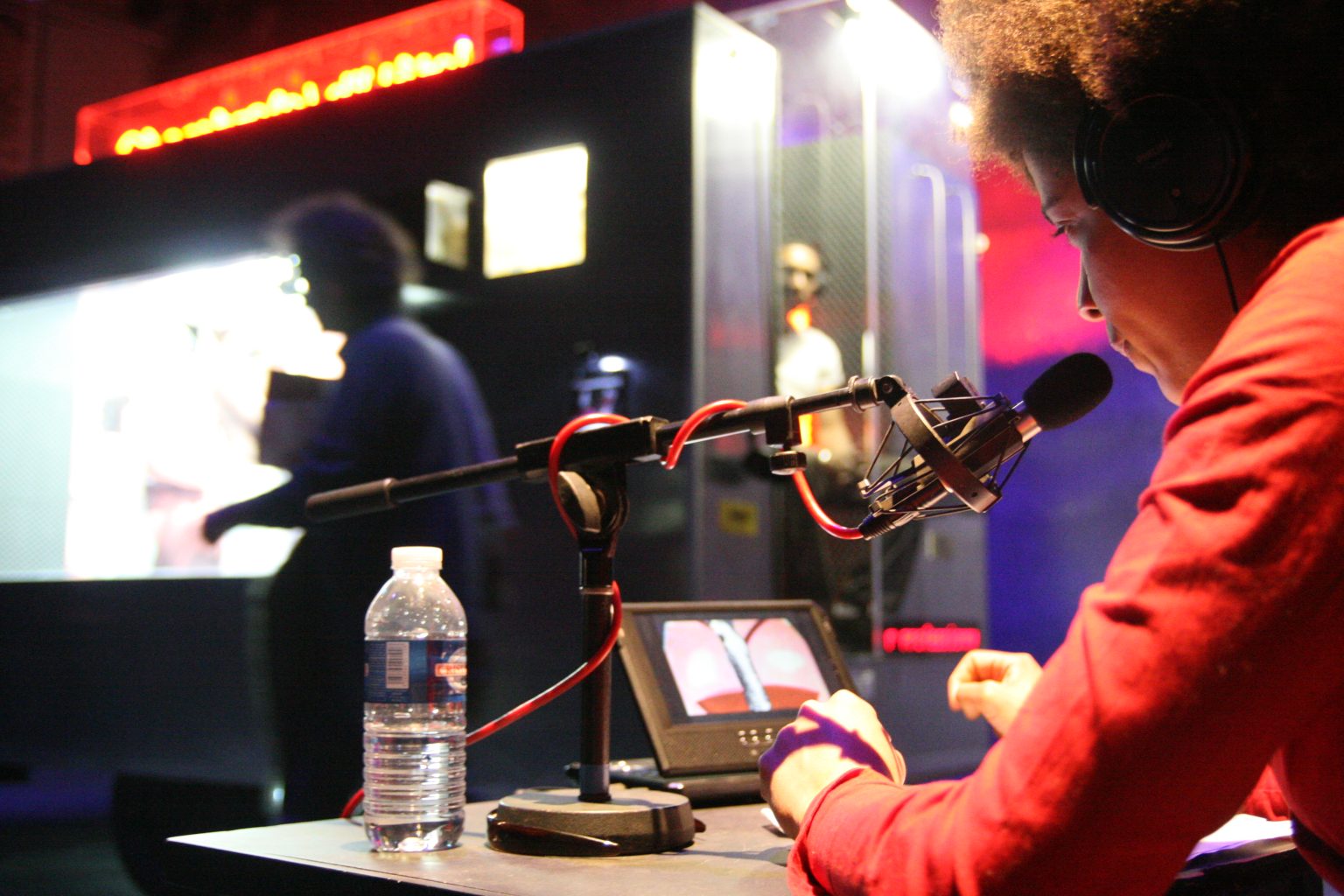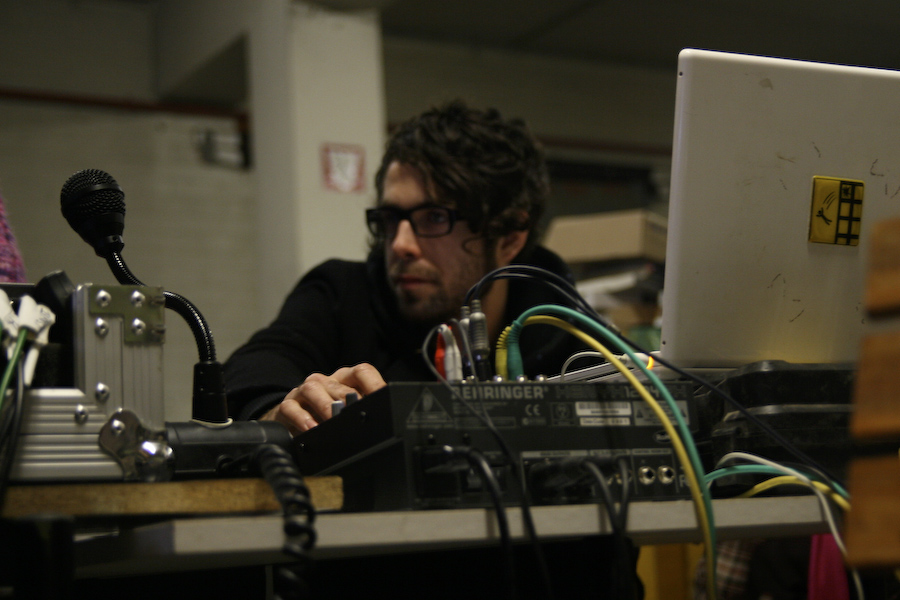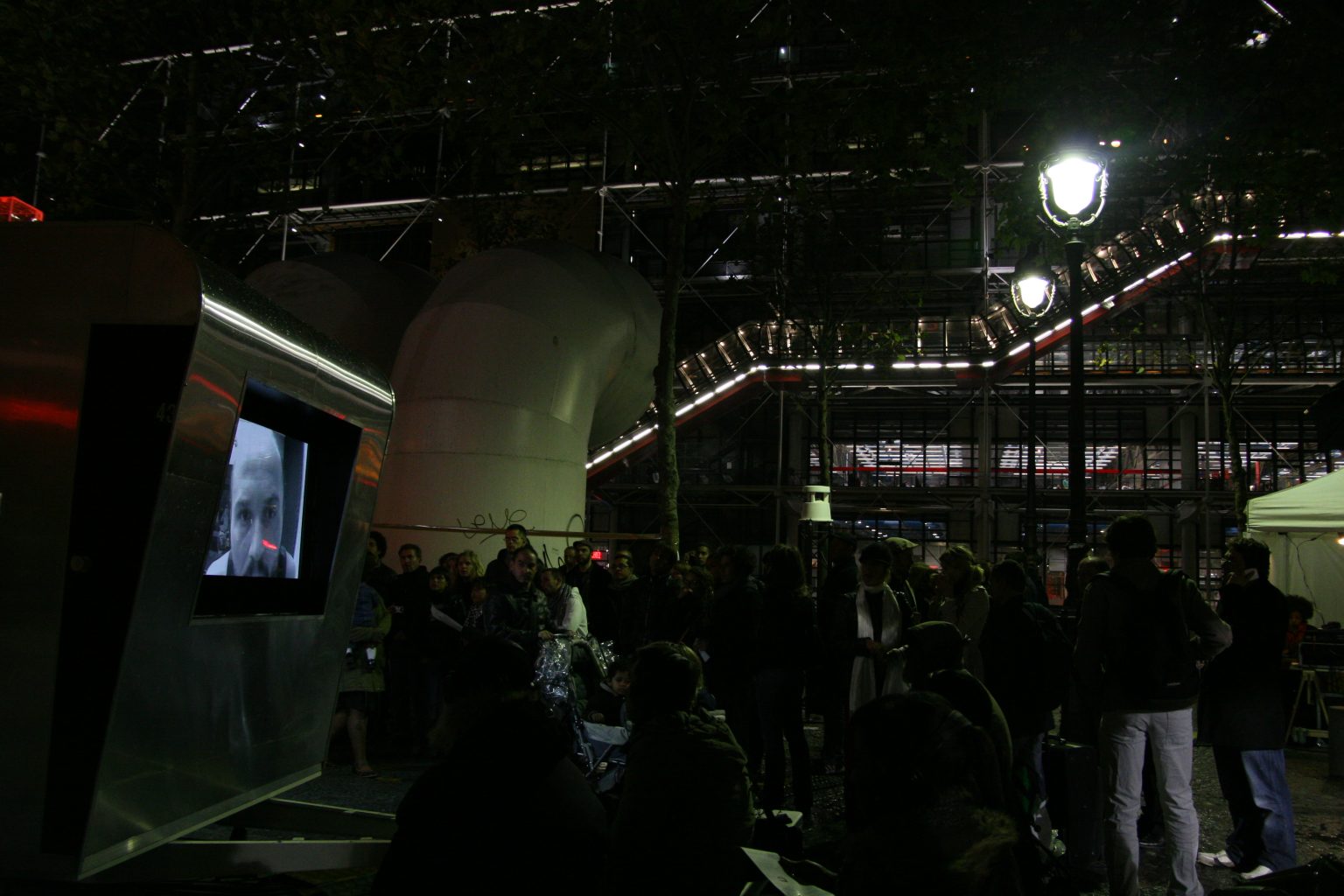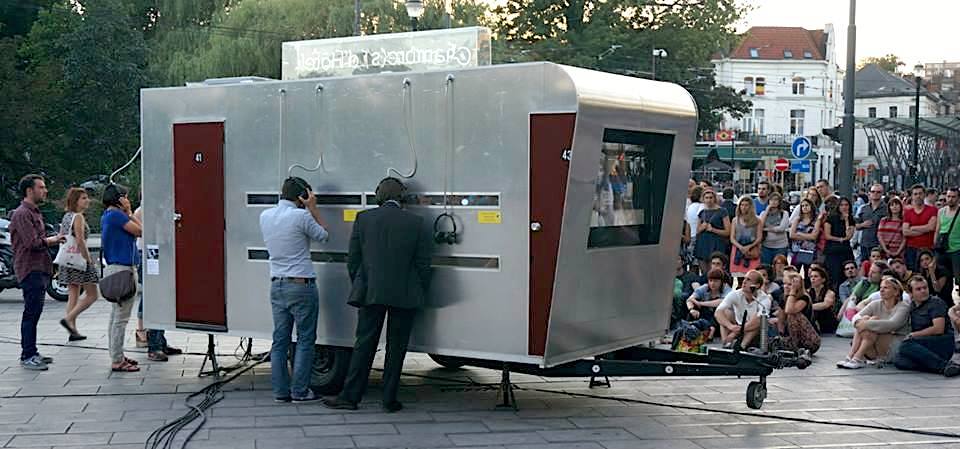Urban space performance ● live video dance ● interview ● live sound ● live web broadcast ● role ● programming interface for live video dance 2008 - 2014
In this creation, the dance company t.r.a.n.s.i.t.s.c.a.p.e explores the relationship between fiction and reality in a public space and with a high degree of participation.
Chambre(s) d’Hôtel is an urban installation combining a performance and a radio interview. A single architectural object, a hybrid and technoid caravan, combines a piece of fiction and a reality which are layered on top of each other during the 2 x 50 minutes of the performance.
Chambre(s) d’Hôtel is a travelling hybrid device, an urban transplant that is experienced as a transit location loaded with possibilities, a breaking moment where each encounter defines the next day. Experimental film, dance and a testimonial are layered together, forming a narrative puzzle in this tense piece of work that is all about identities and territory.



